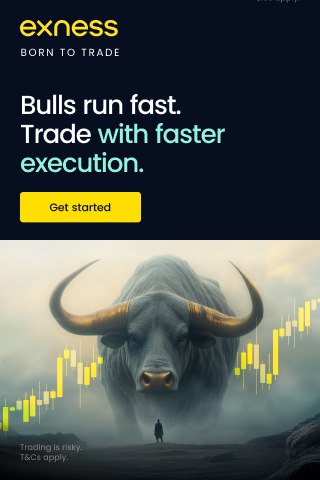
4 minute read
What is USC in EXNESS? How to use - By Exness Trading Tips
When trading with EXNESS, you may notice the abbreviation USC in your account type or balance. Many beginner traders wonder: What exactly is USC, and how do I use it in trading?
The answer is simple: USC stands for US Cents, the smallest unit of the US dollar. In EXNESS Cent Accounts, all balances, profits, and losses are displayed in USC instead of USD.
This feature allows traders to start trading with very small capital, perfect for learning the market without risking large sums.
📌 Start your Cent Account now:

What is USC in EXNESS?
In EXNESS:
1 USD = 100 USC
If your account shows 5,000 USC, it means you have $50.
The USC format appears only in Standard Cent Accounts. This account type is designed for:
Beginner traders
Small-capital traders
Strategy & EA (Expert Advisor) testing
EXNESS FOREX Broker Review 2025: Pros and Cons
How USC Works in Real Trading
Let’s break it down with a practical example.
Example 1 – Deposit and Balance Display
You deposit $10 into a Cent Account
Your balance will show 1,000 USC
This does not change your purchasing power; it just displays amounts in cents.
Example 2 – Opening a Trade
Balance: 1,000 USC ($10)
Pair: EUR/USD
Lot size: 1 lot cent (0.01 standard lot = $1,000 contract size)
Price moves +50 pips in your favor
Profit per pip in this trade = $0.10 (10 USC)
Total profit = 500 USC ($5)
This means with just $10, you made a 50% return on your trade.
Simulation: High vs Low Leverage in USC Trading
Scenario A – Low Leverage (1:100)
Margin required for 1 lot cent ≈ 100 USC ($1)
Safer but limits how many trades you can open at once
Scenario B – High Leverage (1:2000)
Margin required for 1 lot cent ≈ 5 USC ($0.05)
Allows you to open more positions but increases risk
📌 Important: High leverage can multiply both profits and losses.
Benefits of Trading with USC in EXNESS
Low Capital Requirement – Start from as little as $1 = 100 USC
Real Market Experience – Trade in live market conditions without big financial risk
Perfect for Testing Strategies – Ideal for EA and manual strategy testing
Psychological Safety – Less emotional pressure compared to trading large amounts
Open Your USC Cent Account Now

How to Create Exness Real Account 2025
Drawbacks of USC Trading
Small Absolute Profits – Because you trade small volumes, profits are limited
Not for Professional Traders – USC accounts are for learning and practice, not big gains
Step-by-Step: How to Use USC in EXNESS
Register at EXNESS → Sign Up Here
Choose “Standard Cent” Account Type
Deposit Your Starting Capital (minimum $1)
Select Lot Size According to Risk
Trade & Monitor – Watch your balance in USC, convert mentally to USD if needed
Example Trade Walkthrough
Let’s simulate a full trade using USC:
Balance: 2,000 USC ($20)
Leverage: 1:1000
Pair: GBP/USD
Lot Size: 2 lot cent (0.02 standard lot = $2,000 contract size)
Trade Direction: Buy at 1.25000
Exit Price: 1.25250 (+25 pips)
Profit Calculation:
1 pip value for 0.02 lot = $0.20 (20 USC)
25 pips × 20 USC = 500 USC ($5) profit
New balance = 2,500 USC ($25) → +25% growth
This shows how even small USC balances can generate decent percentage returns.
Conclusion
USC in EXNESS stands for US Cents, and it’s the default currency unit for Cent Accounts. It’s an excellent way for beginners to start trading with small amounts, learn risk management, and gain real market experience without risking big capital.
📌 Ready to trade with USC?

FAQ – USC in EXNESS
1. What is USC in EXNESS?It stands for US Cents, the smallest unit of USD, used in Cent Accounts.
2. How much is 1 USC?1 USC = $0.01.
3. How do I open a USC account?Choose a Standard Cent account when registering at EXNESS → Sign Up Here
4. What’s the minimum deposit for USC accounts?Only $1 (100 USC).
5. Can I make big profits with USC trading?Yes, but only if you use large lot sizes and high leverage—this also increases risk.
6. Is USC suitable for experienced traders?Usually, it’s more for beginners and strategy testing, but experienced traders can use it for safe experiments.
See more:

